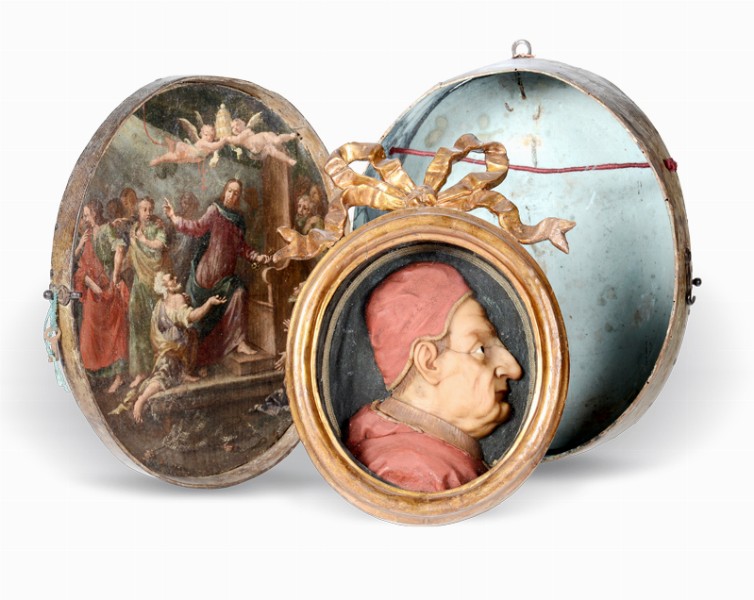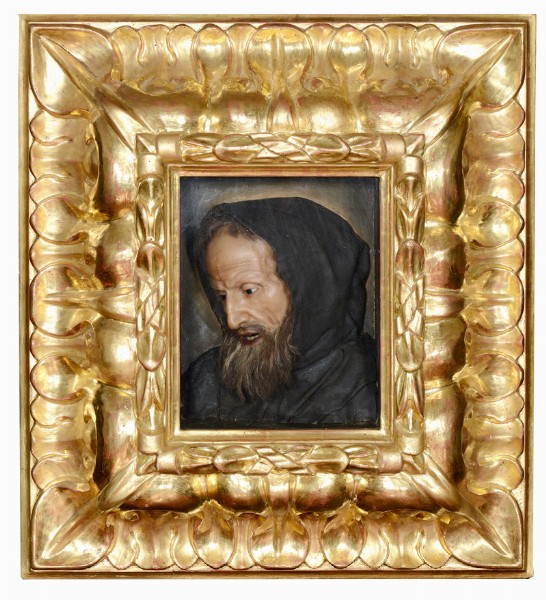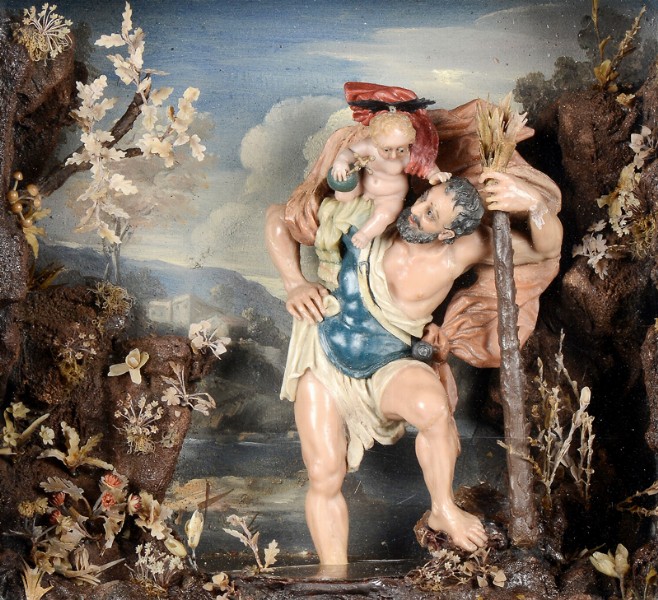Carlo Peruzzo
I have in front of my eyes the image of the wall in the study of Mario Praz where, over the fortepiano, stands the collection of works in wax, an artistic material little explored at the time except for the enormous book History of the portrait in wax. An essay by Julius von Schlosser, released in Germany in 19111 and recently translated in Italian with an enlarged edition by Andrea Daninos2. Looking at this picture I cannot avoid a “sentimental” correlation with another group of works that make up this rare and fine collectible compendium, produced between the 17th and the 18th centuries almost entirely by Italian wax modellers. Once again, like an underground river that resurfaces with its clean water, it reappears from the submerged folds of a cultivated collecting the works of the highest quality, portraying popes with hyper-realistic shapes, small paintings representing vivid naturalistic scenes or religious allegories translated as real still lives, that, dialoguing among each other, provide an easy comparison for experts and enthusiasts.
Wax modelling is an ancient art, already practiced in classical and medieval times, especially with the realization of votive figures, but that, as testified by Vasari3, during the Italian Renaissance, particularly in Florence and Venice, sees new applications in the fields of portrait or in the production of mythological or profane and licentious subjects.
And in the last decade of the 17th century anatomical modelling had a real development especially thanks to the work of the Sicilian artist Gaetano Giulio Zumbo (1656–1701), who worked in Florence, Genoa and Bologna, and whose university was home to the renowned school of human anatomy.
In this very town, in the 18th century worked figures like Angel Gabriel Piò (1690–1770), his student Philip Scandellari (1717–1801), or Angelo Sarti, artists to whom Alvar Gonzalez-Palacios ascribes some of the most representative works of our collection as the Head of Monk (fig. 1) and the Portrait of Pope Benedict XIII, embellished by a richly painted wooden case (fig. 2).
To the Florentine artist Giovanni Francesco Pieri (1699–1773), leading figure in this art, are attributed the Penitent Magdalene and the Crucifixion with Angels (figs. 3 and 4), while to the feminine art of Caterina de Julianis, born in Naples around 1670, belong the rich composition with a central St. Christopher (fig. 5) and the moving and intimate autograph Madonna with Child (fig. 6).
The representation of Santa Rosalia in hermitage, signed and dated 1663, and the Ecstasy of St. Francis within a beautiful rosewood frame are works by the Sicilian artist Matteo Durante.
I leave to the pleasure of discovering the other waxes making up this fine group of works, which will be sold in Palazzo Serbelloni in November. An interesting and unusual opportunity to compare, learn and understand a field of the artistic production rarely occurring in such a significant and organic way in Italy and abroad and that, once again, urges us to some reflections on the essential function of collecting in ancient art.
A world, the one of collecting, which may seem increasingly in the minority, crushed by the loud clamour and the impressive economic numbers of new fields of contemporary arts increased by voracious mechanisms and influenced by fashions and economic speculation.
So definitely a “minority vocation” but at the same time proudly elitist, a privilege for those who eludes the rules of fashion and markets to adhere to a more hidden world, repository of knowledge and emotions, intuitions and judgments, in a meeting between past and present, between curiosity and passion in organizing their own feelings, determined by the need of understanding as well as possessing.
I have in front of my eyes the image of the wall in the study of Mario Praz where, over the fortepiano, stands the collection of works in wax, an artistic material little explored at the time except for the enormous book History of the portrait in wax. An essay by Julius von Schlosser, released in Germany in 19111 and recently translated in Italian with an enlarged edition by Andrea Daninos2. Looking at this picture I cannot avoid a “sentimental” correlation with another group of works that make up this rare and fine collectible compendium, produced between the 17th and the 18th centuries almost entirely by Italian wax modellers. Once again, like an underground river that resurfaces with its clean water, it reappears from the submerged folds of a cultivated collecting the works of the highest quality, portraying popes with hyper-realistic shapes, small paintings representing vivid naturalistic scenes or religious allegories translated as real still lives, that, dialoguing among each other, provide an easy comparison for experts and enthusiasts.
Wax modelling is an ancient art, already practiced in classical and medieval times, especially with the realization of votive figures, but that, as testified by Vasari3, during the Italian Renaissance, particularly in Florence and Venice, sees new applications in the fields of portrait or in the production of mythological or profane and licentious subjects.
And in the last decade of the 17th century anatomical modelling had a real development especially thanks to the work of the Sicilian artist Gaetano Giulio Zumbo (1656–1701), who worked in Florence, Genoa and Bologna, and whose university was home to the renowned school of human anatomy.
In this very town, in the 18th century worked figures like Angel Gabriel Piò (1690–1770), his student Philip Scandellari (1717–1801), or Angelo Sarti, artists to whom Alvar Gonzalez-Palacios ascribes some of the most representative works of our collection as the Head of Monk (fig. 1) and the Portrait of Pope Benedict XIII, embellished by a richly painted wooden case (fig. 2).
To the Florentine artist Giovanni Francesco Pieri (1699–1773), leading figure in this art, are attributed the Penitent Magdalene and the Crucifixion with Angels (figs. 3 and 4), while to the feminine art of Caterina de Julianis, born in Naples around 1670, belong the rich composition with a central St. Christopher (fig. 5) and the moving and intimate autograph Madonna with Child (fig. 6).
The representation of Santa Rosalia in hermitage, signed and dated 1663, and the Ecstasy of St. Francis within a beautiful rosewood frame are works by the Sicilian artist Matteo Durante.
I leave to the pleasure of discovering the other waxes making up this fine group of works, which will be sold in Palazzo Serbelloni in November. An interesting and unusual opportunity to compare, learn and understand a field of the artistic production rarely occurring in such a significant and organic way in Italy and abroad and that, once again, urges us to some reflections on the essential function of collecting in ancient art.
A world, the one of collecting, which may seem increasingly in the minority, crushed by the loud clamour and the impressive economic numbers of new fields of contemporary arts increased by voracious mechanisms and influenced by fashions and economic speculation.
So definitely a “minority vocation” but at the same time proudly elitist, a privilege for those who eludes the rules of fashion and markets to adhere to a more hidden world, repository of knowledge and emotions, intuitions and judgments, in a meeting between past and present, between curiosity and passion in organizing their own feelings, determined by the need of understanding as well as possessing.


